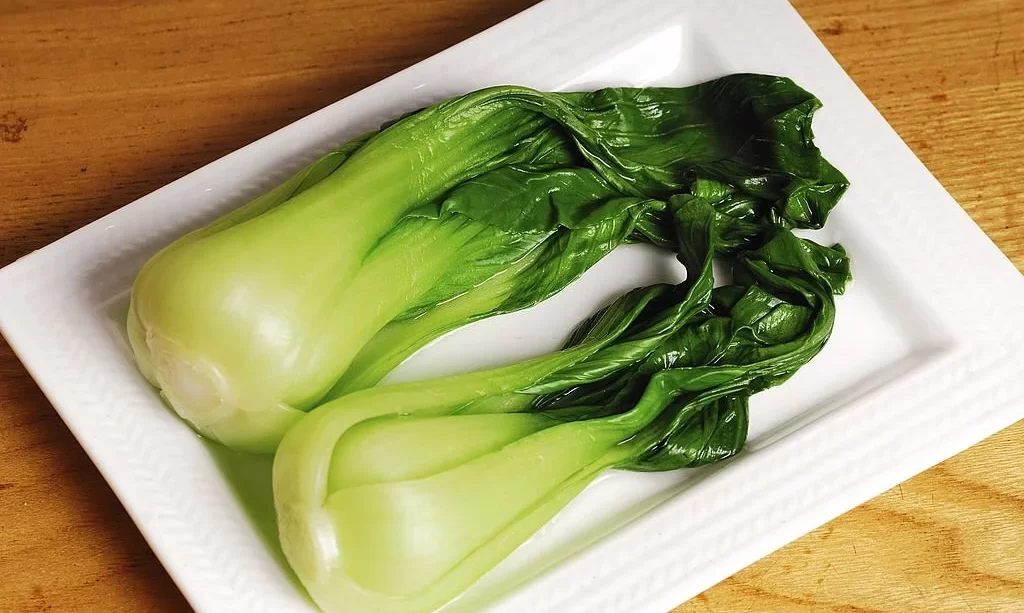Bok choy, with its crisp texture and mild, slightly peppery flavor, is a beloved leafy vegetable in various culinary traditions. Whether you’ve harvested an abundance from your garden or found a great deal at the market, freezing bok choy is an excellent way to extend its shelf life and ensure you have this nutritious green on hand whenever you need it. In this comprehensive guide, we’ll walk you through the steps to freeze bok choy effectively, allowing you to preserve its freshness and nutritional value. Let’s begin with the first essential step: selecting fresh bok choy.
Selecting Fresh Bok Choy
To ensure that your frozen bok choy retains its quality and flavor, it’s essential to start with fresh bok choy. Here’s how to select the best bok choy for freezing:
- Vibrant Green Leaves: Look for bok choy with vibrant, dark green leaves. Avoid any bok choy with yellowing or wilted leaves, as this indicates aging and potential loss of flavor and nutrients.
- Firm Stalks: Gently squeeze the stalks of the bok choy. They should feel firm and crisp. Avoid bok choy with limp or rubbery stalks, as they may have lost their freshness.
- Check for Damage: Inspect the leaves and stalks for any signs of damage, such as bruising or brown spots. Opt for bok choy that is free from such imperfections.
- Baby Bok Choy vs. Regular Bok Choy: Depending on your preference and intended use, you can choose between baby bok choy and regular bok choy. Baby bok choy is smaller, more tender, and quicker to prepare, making it a popular choice for stir-fries and salads. Regular bok choy, with its larger leaves and thicker stalks, is versatile for various cooking methods.
With your selection of fresh bok choy in hand, you’re ready to move on to the next steps of preparing and freezing this delightful leafy green, ensuring its quality is preserved for future culinary endeavors.
Preparing Bok Choy for Freezing
Now that you’ve selected the freshest bok choy, it’s time to prepare it for freezing. Proper preparation is essential for maintaining its texture and nutritional value. Here’s how to do it:
- Wash Thoroughly: Begin by washing the bok choy thoroughly under cold running water. This step removes any dirt, debris, or pesticide residues that may be present. Gently separate the leaves or stalks to ensure a thorough cleanse.
- Trim the Root End: Trim the root end of the bok choy, removing any discolored or damaged sections. Cutting away the root helps improve the texture and taste of the frozen bok choy.
- Separate the Leaves or Stalks: Depending on your intended use, you can choose to freeze whole baby bok choy or separate the leaves and stalks of regular bok choy. Separating them allows for more flexibility when it comes to using the frozen bok choy in various dishes.
- Blanching: Blanching is a crucial step in the freezing process. It helps preserve the color, texture, and nutritional value of bok choy. To blanch bok choy, bring a large pot of water to a boil and prepare an ice bath (a bowl filled with ice and water). Submerge the bok choy in the boiling water for approximately 2 minutes, then promptly transfer it to the ice bath to cool rapidly. Drain the blanched bok choy and pat it dry with a clean kitchen towel or paper towels.
Packaging for Freezing
Proper packaging ensures that your frozen bok choy retains its quality during storage. Follow these steps to package it effectively:
- Portion the Bok Choy: Depending on your future recipes, consider portioning the blanched bok choy into suitable amounts. This makes it easier to grab the quantity you need without thawing the entire batch.
- Use Airtight Containers: Choose airtight containers or heavy-duty freezer bags designed for freezing. These containers help prevent freezer burn and maintain the bok choy’s freshness.
- Remove Excess Air: If using freezer bags, try to remove as much excess air as possible before sealing them. Less air means fewer chances of freezer burn.
- Labeling: It’s essential to label each container or bag with the date of freezing. This way, you can keep track of the freshness of your frozen bok choy.
- Splatter-resistant microwaving with built-in vents under latches; resists stains and odors for long-lasting use
- Stacks perfectly to one another to save space and stay organized in the pantry or fridge
- International products have separate terms, are sold from abroad and may differ from local products, including fit, age ratings, and language of product, labeling or instructions
- Safe for the dishwasher, microwave and freezer
Freezing Bok Choy
With your bok choy properly prepared and packaged, it’s time to freeze it for future use:
- Arrange on a Tray: Lay out the packaged bok choy portions on a baking sheet or tray, ensuring they are not touching. Placing them in a single layer helps prevent sticking and clumping during freezing.
- Pre-Freezing: Put the tray with the packaged bok choy in the freezer. Allow them to pre-freeze for a few hours or until they become firm and individually frozen. This step prevents the pieces from sticking together when stored in the container or bag.
- Transfer to Storage: Once the bok choy portions are pre-frozen, transfer them into the labeled airtight containers or freezer bags.
By following these steps, you’ll have well-prepared and properly packaged bok choy that’s ready to be stored in the freezer. This method preserves the freshness and taste of this versatile green, making it a valuable addition to your freezer for future culinary adventures.
Using Frozen Bok Choy
Using frozen bok choy in your culinary creations is a breeze. Here’s how to make the most of this convenient ingredient:
- Cook Directly: The beauty of frozen bok choy is that you can add it directly to your hot pan or pot without the need for thawing. Whether you’re making stir-fries, soups, or stews, simply toss the frozen bok choy into your dish during cooking.
- Adjust Cooking Time: Keep in mind that frozen bok choy may take slightly longer to cook than fresh bok choy. Monitor its texture and tenderness, adjusting the cooking time as needed to achieve the desired consistency.
- Versatile Ingredient: Frozen bok choy works well in a variety of dishes. Whether you’re preparing a quick weeknight stir-fry or simmering a hearty soup, having this frozen green on hand adds nutrition and flavor to your meals year-round.
Conclusion
Freezing bok choy is an excellent way to preserve its freshness and nutritional value, ensuring you have this versatile leafy green available whenever you need it. By selecting the freshest bok choy, preparing it correctly, and following the steps outlined in this guide, you can enjoy the convenience of frozen bok choy in your favorite recipes.
Whether it’s a quick stir-fry, a comforting soup, or a flavorful stew, frozen bok choy can elevate your dishes and provide essential nutrients even when fresh bok choy is not in season. With this valuable addition to your freezer, you’re all set to explore new culinary adventures while savoring the essence of bok choy throughout the year.





